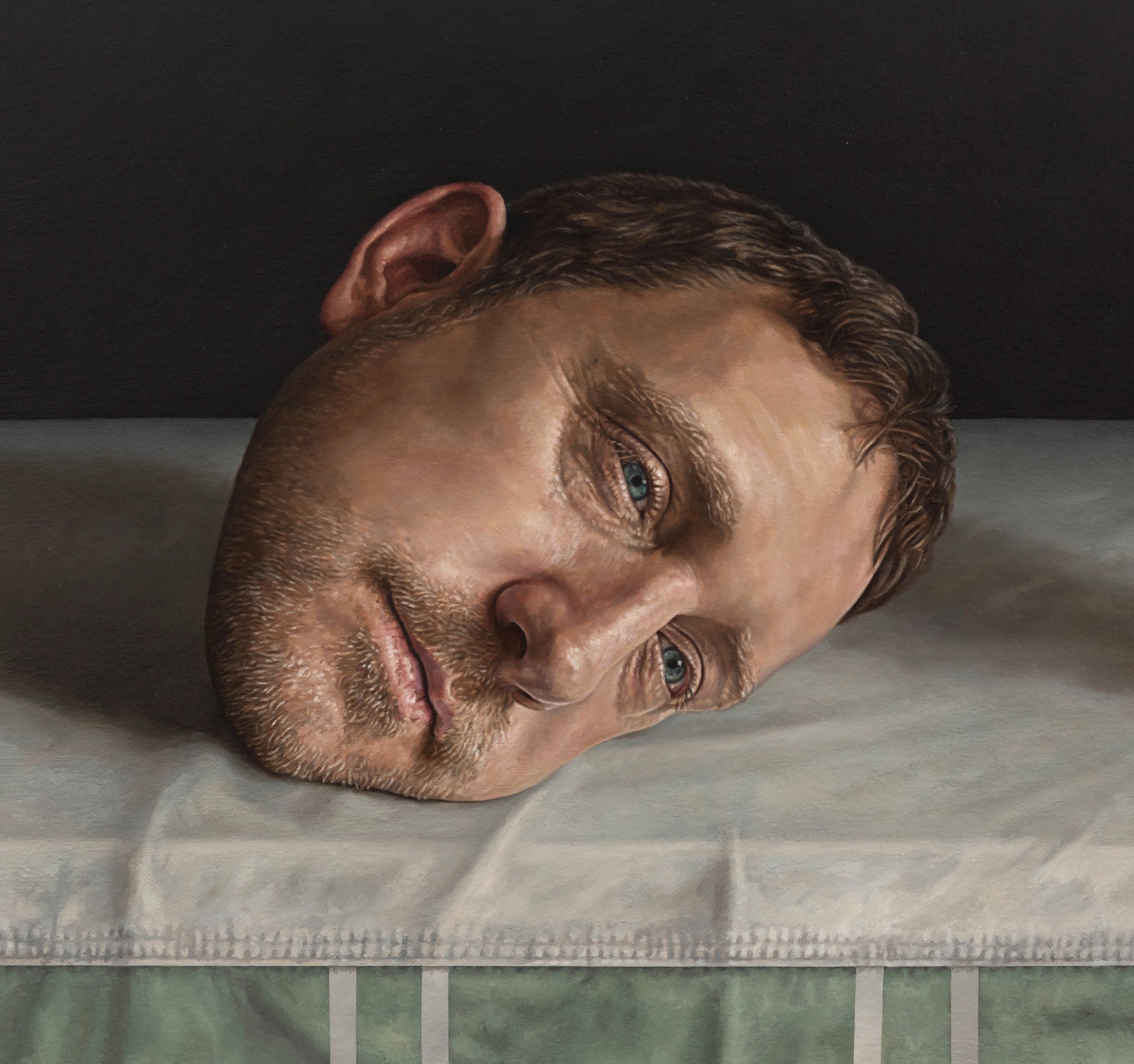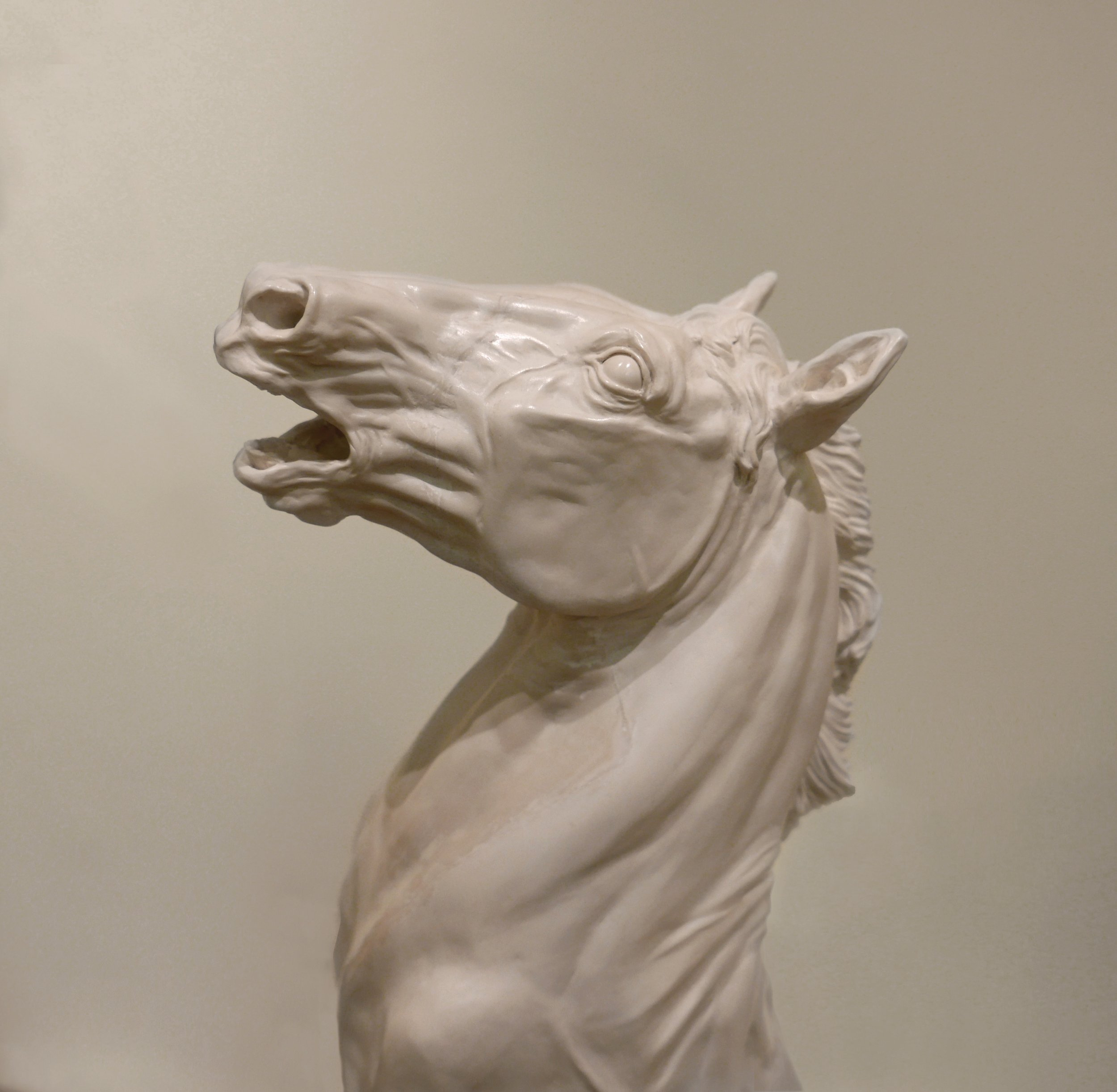ARTIST INTERVIEW: JOEL ELY
Please introduce yourself. What ignited your passion for art?
I’m an Artist from Kent and I can’t remember a time when I haven’t been making art, but the focus and process is changing all the time.
Your piece, ‘Self Portrait as Still Life with Slide Sheet’ captures an interesting version of yourself. What was your creative process for creating this piece? How does this painting reflect you as an individual?
It was conceived during lockdown and when I was nursing my Father as his health deteriorated. This left him bed bound for the last 18 months of his life. I was thinking about the idea of “Still Life” for both the population as whole (geographically and economically) but also for my Father’s constraint and my Family’s love for him.
My thoughts included the Covid pandemic, the crisis in the NHS and the cost of living crisis; clapping for heroes, food shaming and food banks; levelling up and trickling down; the deposing/removal of heads of institutions.
In terms of the creative process it’s always the first spark, then playing with reference and free association to create something “of history” and loaded, but also hopefully an artwork that exists as it’s own unique hybrid creature in the world. I don’t want my artworks to be well behaved, I’m looking for a certain awkward combination.
For example, in this painting the format of the Self Portrait/Still Life recalls a painted “gisant” or tomb effigy but also a supermarket checkout conveyor belt as well as the hospital bed my father was confined to. I was thinking along the lines of: Restriction, confinement, aspiration, care. Life, death, work and shopping.
I suppose I’ve always wanted to combine a sincerity with a sense of play/gallows humour in my practice and in this painting particularly. I’ve probably inherited that from my Dad.
How do you capture the essence of your sitter's personality?
I’m not really comfortable with ideas of essence or capturing. Conveying the idea of the sitter comes from engagement and observation. Ultimately, when I’m commissioned to make a portrait of someone, the process has to be collaborative. It’s more about them than about me and my practice: I like people and I like finding out about their lives, worries and passions.
Where do you source your inspiration? How have your surroundings influenced your work?
Anything can inspire me but the list of artists that inspired or altered me growing up would go something like this: John Everett Millais, Gwen John, Hans Holbein, Bosch, Hogarth, Bourgeois, Adrian Piper, Cindy Sherman, Leigh Bowery, Matthew Barney as well as from other fields: Orwell, Bertolt Brecht, Terry Gillingham, Jim Henson and Jan Svankmjer. Reading about and thinking about both History and Food/cuisine has often been an inspiration, the fluid nature of culture and identity comes up again and again.
What does a typical day look like for you in the studio?
I usually start a day with office stuff. Recently, I’ve been working on a big project for the ‘Storytellers’ exhibition down in Canterbury and that has involved a lot of research and collaboration. So, the office and organisation part of the day has been bigger. I like to get that out of the way and update to-do lists early so that when I can buckle down to the making I don’t have nagging thoughts.
If I’m painting or sculpting I like to stay light; so little food and plenty of coffee/cigarettes early on and then depending on many variables I work until there is a natural break or no more progress is being made. I don’t tend to paint for periods of less than three or four hours as clear up and locking into the palette can mean that it’s not productive for me. Usually, I try and get eight or nine hours in a day. If I’ve locked in to the painting, palette, process and mood and everything is going well I will sometimes paint for 15hrs or more at a time but those feverish/productive/good times can be rare. Deadlines and distractions often play a role!
Hooden Horses (3 Men of Kent) 2023
Mixed Media including Bronze, Brass, Jute, Chalk, Cotton, Oak, Jesmonite, Enamel, Steel, Pearl, Acrylic etc
The horses have names:
Hooden Horse no.1 (Highfalutin/Show pony)
Hooden Horse no.2 (Teeth Gnasher)
Hooden Horse no.3 (The Drinker)
Out of all your artwork, which piece are you most proud of and why?
I don’t think you should have favourites, the pride comes from work going out into the public and affecting people.. but that opportunity is often about chance rather than the quality of the individual work itself.
What has been your biggest achievement so far as an artist? Has there been any challenges?
In terms of achievement, it’s always great to exhibit somewhere with a broad audience. I think there is an opportunity to reach open minds which frees up the use of the work and offers lots of possibilities.
The National Portrait Gallery shows were great for that with the added bonus of them touring around the country. Also showing alongside artists whose work I had admired since I was young: showing with Anya Gallaccio, Paula Rego and David Hockney in a show inspired by the storytelling of the Brothers Grimm was a treat.
The challenges for me have always been practical/financial (how to eat, pay rent and still put out a body of work without creating something commercial/fashionable or market driven). There is always a challenge in finding a platform/grouping for my work as it doesn’t fit neatly with the changing movements in Art over the last 20 years.
Why do you think art is important in society?
It gives us an opportunity to play with ideas and to confront difficult realities in an open ended way.







